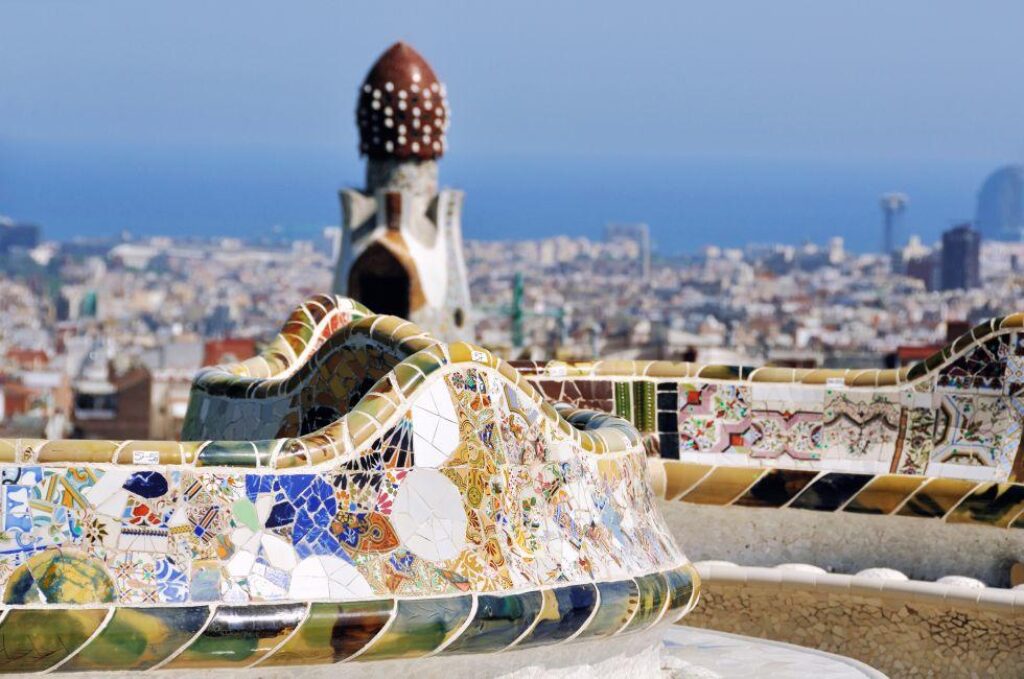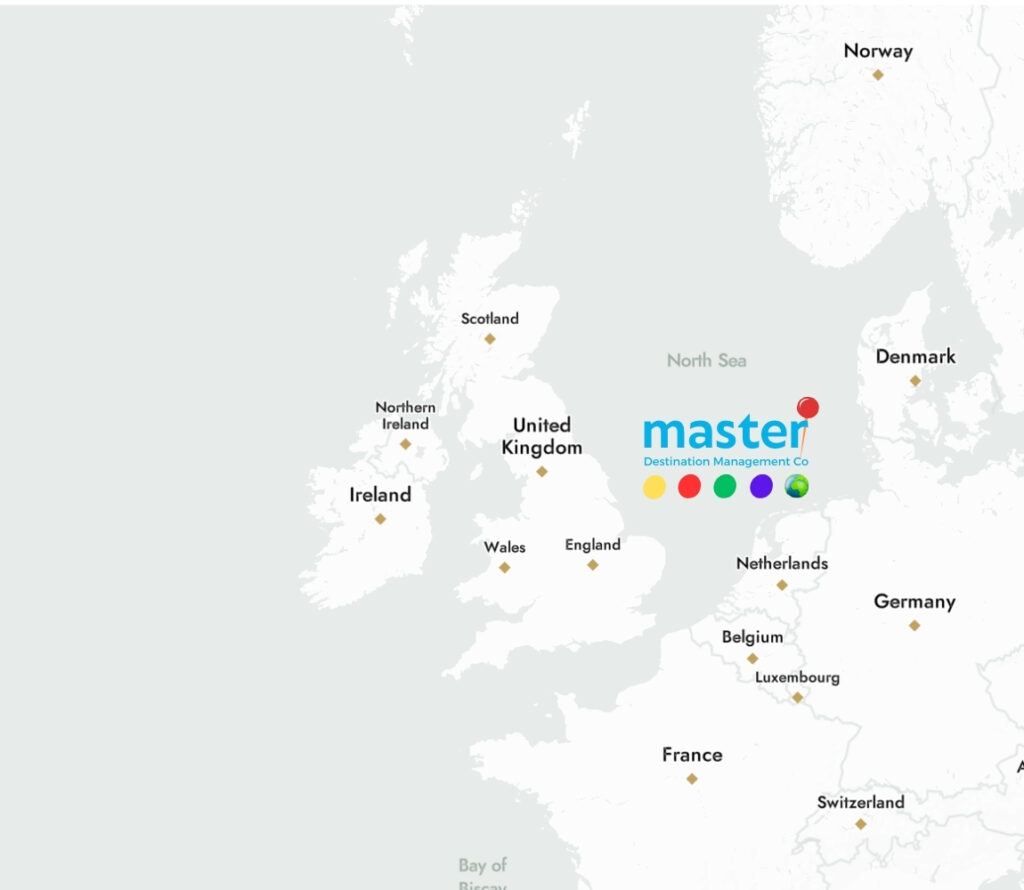Europe Travel Guide
Eastern Europe: Eastern Europe generally refers to the countries that were behind the Iron Curtain. It’s made up of Belarus, Bulgaria, Czech Republic, Hungary, Poland, Moldova, Romania, Russia, Slovakia, and Ukraine. It’s a cheaper destination for budget travelers, and some of its top historical sites include the Prague Castle, the State Hermitage Museum and Word War II history.
Northern Europe: Northern Europe is known for its stunning fjords, wintery landscapes, and the most beautiful natural phenomena, the Northern Lights. If you want to see them, you’ll need to visit in the winter when conditions are at their best. Northern Europe encapsulates Scandinavia, the Baltics, and the United Kingdom.
Southern Europe: Southern Europe is made up of all the countries close to the Mediterranean Sea. Spain, Italy, Malta, Greece, Croatia, Bosnia and Herzegovina, and Montenegro are some of the most visited destinations in the region. It’s known for its incredible sailing, natural wonders, and ancient history. And the food and wine! Talk about a wine lover’s dream destination.
Western Europe: Western Europe is one of the most popular regions in Europe. It’s home to countries like Austria, France, Germany, Netherlands, and Switzerland that attract millions of visitors each year. Some of its most-traveled cities are Paris, Berlin, Vienna and Amsterdam!
Food is a huge part of the authentic Barcelona experience, but beware: Spaniards eat late!On the weekends, you might not eat dinner until 11 p.m., so make sure to have some 5 p.m. tapas as a quick merienda to keep you going. Blend in with the locals by getting their fresh produce at the Mercat De La Boqueria, then eat your way through as many bodegas as you can for snack-sized tortillas, chorizo, pimientos, croquetas, and gambas for an ensured good time out on the town.
Paris is the most beautiful city in the world—it’s also one of the smallest of the major cities and easily navigable on foot. There’s no better way to take in Paris’ countless wonders and legendary beauty than by doing as the Parisians do and strolling to your heart’s content. But if you need to get somewhere fast, the Paris metro is clean, reliable, safe, fast, and easy to navigate.
The main island of Venice is a pleasantly walkable size, but there’s a lot packed into its narrow streets. Most visitors make a beeline for St. Mark’s Square, the city’s grandiose piazza with a 900-year-old church. Just down the waterfront, you’ll find the melancholy Bridge of Sighs. These sights are must-sees, but they are a minute part of what there is to experience in Venice. Try splitting your itinerary using the city’s six sestieri, or neighborhoods, plus another day or two for the outlying islands like Murano, Burano, and Torcello.
Even if you’ve never been to Austria, chances are you’ve heard of Wiener schnitzel, the breaded and fried cutlet of veal, typically served with potatoes or a potato salad and some cranberry sauce. The number one place to try it is Figlmüller (they also have a vegan version). However, it’s not all about schnitzel in Vienna. Tafelspitz (filet of boiled beef) is another classic, and Plachutta is the go-to place for it. Vienna also has an ever-growing plant-based scene with Michelin-starred Tian and Swing Kitchen (for vegan fast food) among the local favorites.
Amsterdam’s seamless melding of history, culture, and modernity should be explored sans motor. That’s right: the best way to get around this pulsating capital is by the strength generated by your calves. After all, a labyrinth of metropolitan-friendly bike paths snakes through the city, beckoning locals and tourists alike to pedal aside picturesque canals and cafes. And while driving a car in Amsterdam isn’t entirely discouraged, the scarce parking availability, congestion, and traffic make utilizing Amsterdam’s cycle-friendly infrastructure a no-brainer.
Never understood the importance of a siesta? Wait until you visit Madrid. The city is famous for its nightlife and so locals follow a different rhythm of life than most. Breakfast tends to be light, lunch is the main meal of the day (usually between 2-4 p.m.), and dinner doesn’t tend to start until 9 p.m. And don’t think you’ll be in bed by 10:30: nightlife rarely starts before midnight and many bars stay open until dawn. That afternoon nap suddenly feels a lot more necessary.

Alsace-Lorraine
nly the Rhine separates Germany from Alsace-Lorraine, a region that often looks German and even sounds German. But its heart—just to prove how deceptive appearances can be—is passionately French. One has only to remember that Strasbourg was the birthplace of the Marseillaise national anthem to appreciate why Alsace and Lorraine remain among the most intensely French of all France’s provinces.
The Dolomites
The Dolomites, those inimitable craggy peaks Le Corbusier called “the most beautiful work of architecture ever seen,” are never so arresting as at dusk, when the last rays of sun create a pink hue that languishes into purple—a magnificent transformation locals call the enrosadira. You can certainly enjoy this glow from a distance, but the Dolomites are such an appealing year-round destination precisely because of the many ways to get into the mountains themselves. And once there, in short order your perspective—like the peaks around you—will become a rosy hue.
The Amalfi Coast
Remember there are 13 towns along the Amalfi Coast.
Squeezed between high mountains and the sea, the ribbon of coastline known as the Costiera Amalfitana (Amalfi Coast) has been a tourist destination since Roman times. The towns of Positano and Amalfi get the lion’s share of visitors and offer five-star hotels, beach clubs, and myriad souvenir shops. But there are 13 localities in total along the shore or clinging to the cliffside. Explore as many as you can, from Cetara—a fishing village famous for its umami-rich anchovy paste—to Vietri sul Mare, the home of the coast’s eye-popping ceramic production.
The Italian Riviera
Nestled between the south of France and the Tuscan border lies the region of Liguria, with verdant and lush mountains to the north and east, and the sapphire-blue Mediterranean to the south and west. In between is a land of lush vegetation, medieval hilltop hamlets, panoramic vistas, colorful seaside villages, pristine beaches, and one of Italy’s most underrated cities, Genoa.
Portugal
Nestled between Spain and the Atlantic Ocean, it’s no surprise that Portugal has abundant seafood and beautiful beaches. Yet the landscape unfolds in astonishing variety from the coastline to the lush vineyards of the Douro River Valley to a mountainous, green interior dotted with castles. Celtic, Roman, and Islamic influences are evident in the land and its people, whose apparent reserve belies a welcoming and friendly nature. From big cities to tiny villages, a popular pursuit is to meet with friends and family and linger over strong coffee and pastries as the hours glide by.
Greece
A visit to the land of Homer, Aristotle, and Sophocles is a journey to the dawn of classical civilization, with archaeological splendors from Athens to Crete. The towering monasteries of Meteora and soaring Mt. Olympus inspire awe, while relaxing islands like Corfu and Santorini invite simple pleasures and a taste of the good life on the Aegean Sea. The Greek countryside presents the perfect coda with idyllic landscapes of cypress groves, vineyards, and olive trees, as well as dramatic coves with sparkling white sand and rugged mountains that plunge into the sea.
Italy
Italy is the whole package, and it knows it. Covering 116,350 square miles of gorgeous coastlines, mountains, and countryside and with more than 2,700 years of history and culture in all genres, it’s hard to beat the cultural wealth and beauty of Italy’s everyday–whether food, art, fashion, or design. And though Italy is united under the same country code +39, it is a patchwork of personalities—20 regions with distinctly different traditions and terrains.
Since the Grand Tour itineraries of yesteryear, the cities of Rome, Florence, Naples, and Venice have topped the list of must-see destinations. The 21st-century itinerary expands outward for full immersion into Italian culture with an extended lineup that includes the beaches of the Amalfi Coast and Puglia, the food towns of Emilia Romagna, the powdery slopes of the Italian Alps, the fashion of Milan, and the entire island of Sicily.
Switzerland
Whether on snow-capped mountains or in glitzy resort towns, you can experience the high life in Switzerland. Visitors are elated by its soaring outdoor recreation, riding cable cars up peaks near the Matterhorn, sipping Swiss wine while cruising on a crystalline alpine lake, and skiing the immaculate slopes of St. Moritz. At the end of the day, lavish spas beckon, along with lively après ski scenes and pots of fondue. Sophisticated cities like Zurich and Geneva take luxury to new heights, with posh boutiques and upscale restaurants lining their cobblestoned streets.



